What Is Biodegradable Plastic Made Of?
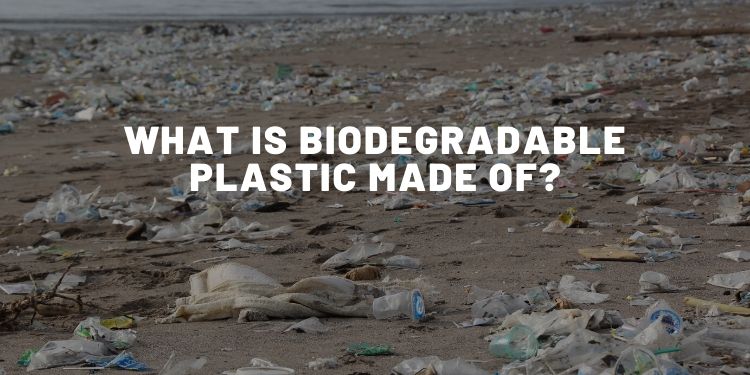
This post and the photos within it may contain affiliate links. If you purchase something through the link, I may receive a commission at no extra charge to you.
Biodegradable plastics and other similar “eco-friendly” items, such as biodegradable plastic bags, are confusing, misleading, and misinforming.
People believe that if it is “biodegradable,” then it is okay to use it and dispose of it without any guilt.
However, what exactly is the deal with the increasing biodegradable plastics? And most importantly –
What is a biodegradable plastic made of?
Biodegradable plastics can be made from 1) a mixture of organic bio-based materials, such as starch and cellulose; 2) biodegradable synthetic polyesters that are fossil-based or 3) bio-based oils, such as sugarcane, which are not always biodegradable.
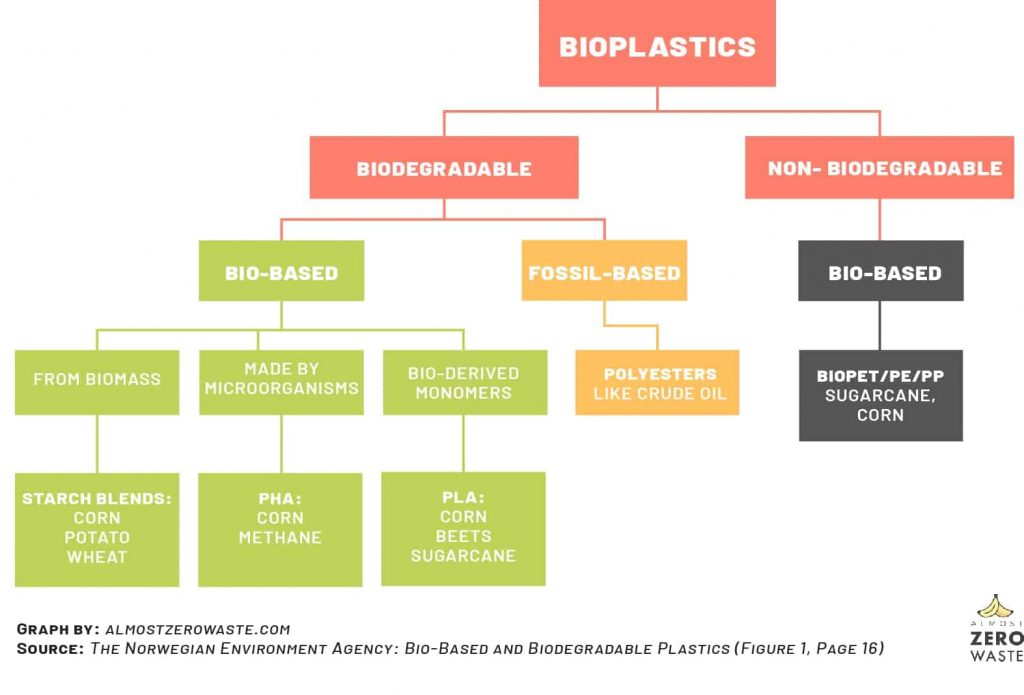
Biodegradable plastics are a very controversial and confusing topic.
Before making any conclusions, many more essential aspects need to be taken into consideration. After my extensive research on the topic, let’s look closely at:
- What are biodegradable plastic bags made of?
- What are the problems with biodegradable plastics?
- Advantages and disadvantages of biodegradable plastics
- Biodegradable plastic – manufacturing process
- FAQ:
– Who invented biodegradable plastic?
– Are biodegradable plastic bags better?
– Does biodegradable plastic harm the environment?
– How long do biodegradable plastics take to decompose? - Sum up
1. What are biodegradable plastic bags made of?
“Biodegradable” means when something is capable of being decomposed by bacteria or other living organisms. Almost every material will eventually biodegrade, given enough time.
Biodegradable plastics are usually made with renewable raw materials, micro-organisms, petrochemicals (refined petroleum), or a mixture of the three.
Biodegradable plastics can be divided into three groups according to their origin (1):
- a. Biodegradable but not bio-based – often made with synthetic polyesters
- b. Biodegradable and bio-based – made with starch or cellulose-based materials
- c. Biobased but non-biodegradable – from biobased oils
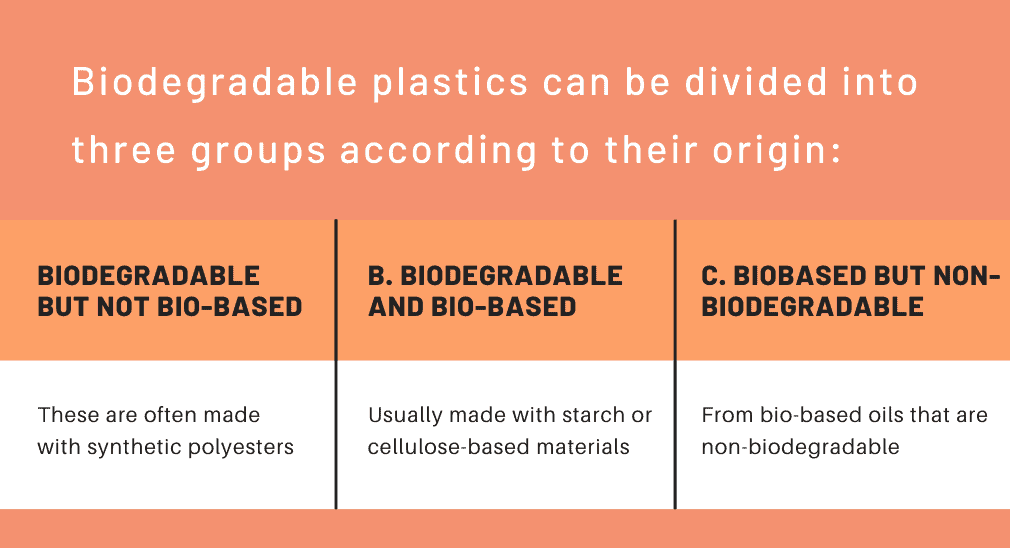
In a nutshell, most biodegradable plastics are made from traditional petrochemicals but are designed to break down faster.
They include additives that make them degrade rapidly in the presence of light, oxygen, moisture, and heat. Plus, biodegradable plastics decay faster because of naturally occurring microorganisms such as bacteria, fungi, and algae. (1)
That is why biodegradable plastics often have a shorter lifespan in the environment – they can be decomposed into water, carbon dioxide, or methane, and biomass by living organisms, such as microbes.
Biodegradable plastics don’t always break down into harmless substances; they can leave behind toxic materials, which can make some of them unsuitable for composting.
2. What are the problems with biodegradable plastics?
MICROPLASTICS
Biodegradable plastics decompose into smaller pieces – becoming microplastics. Microplastics, as we figured out here, can be dangerous for marine life, wildlife, and humans.
RESOURCES
Biodegradable plastics are regularly considered as a sustainable substitute for petroleum-based plastic. However, the amounts of resources and energy required to produce them are usually not thought about.
BREAKDOWN DEPENDS ON THE ENVIRONMENT
The breakdown is reliant on temperature and humidity. That means if the weather is very cold, or the temperature is too high and humid – the process will slow down, or essentially stop.
Moreover, if it ends up in a landfill, it might get buried. Which again will stop the breakdown process, because of the lack of light and oxygen.
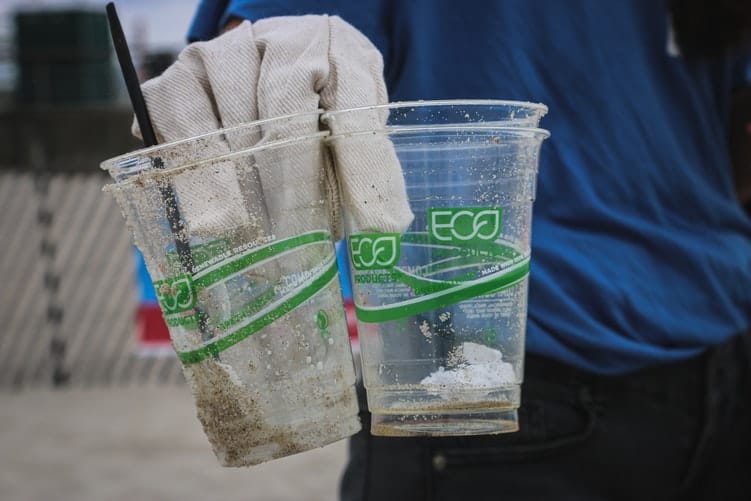
WASTE MANAGEMENT INFRASTRUCTURE
Mixing biodegradable plastics with regular waste can hold some problems – the waste management infrastructure in most places is not suitable for biodegradable plastics.
The waste management infrastructure currently recycles regular plastic waste, incinerates it, or places it in a landfill.
The intervention of biodegradable plastics among fossil-based plastics leads to contamination, and it reduces the quality of the recyclate.
MISLEADING
The time of the biodegradation process depends on the environment, as I mentioned already (humidity and temperature).
So, when a company claims that plastic is “biodegradable” without any information about the timeframe and what are the required environmental conditions, it is very misleading to us, the customers.
SINGLE USE
Biodegradable plastics are intended for a single or very short use, which makes it not the best option.
Biodegradable single-use plastics can be single-use packaging, cups, utensils, food waste collection bags, plates, etc.
Any material that is single-use is hard to be considered as a sustainable choice.
NO SPECIFICATIONS
Without given qualifications and information on how to dispose of an item, the title “biodegradable” can be uncertain.
The term “Bio“ can be confusing because it can point to different characteristics:
- either the biological origin of the plastic (“bio-sourced“)
- or its end of life (“biodegradable“)
Still, don’t forget that some bio-sourced plastics (made from renewable, vegetable biological resources) – are not biodegradable.
Conversely, some plastics from petrochemicals (and therefore not bio-sourced) are biodegradable.
A lack of explanation about the biodegrading process requirements can be very problematic.
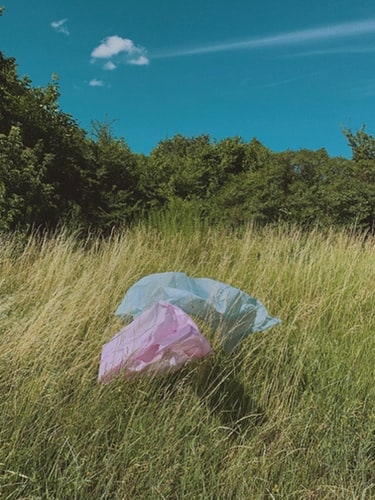
3. Advantages and disadvantages of biodegradable plastics
PROS:
- One positive aspect of biodegradable plastics is that they can be broken down by naturally occurring bacteria (when treated in the right environment)
- The use of renewable raw materials in the manufacture of biodegradable plastics reduces the use of fossil fuels
- Bio-sourced plastics offers potential ways for the recovery and development of biomass (agricultural food co-products, waste, lignocellulose, etc.)
CONS:
- They do not decompose unless they are disposed of properly, meaning that biodegradable plastics must be treated in special conditions
- The natural breakdown of the plastic won’t occur if it is thrown in a landfill with other waste
- Biodegradable plastics are more expensive because most of them have a higher density that contributes to the higher price
- “Biodegradable” does not mean a material is compostable or recyclable
- Biodegradable plastics may be manufactured from non-renewable resources

4. Biodegradable plastic – Manufacturing process
The most familiar bioplastics are made from natural materials such as corn starch. So, let’s see how the manufacturing process of plastic from statch looks like.
Production of biodegradable plastic from starch
STEP 1: Preparation
Cassava tubers are peeled and washed with water. Then, the tubes are mechanically grated.
STEP 2: Filtering
The grated cassava is mixed with water (3 times the volume of the grated material). The mixture is strained and filtered using a coarse sieve and filter cloth.
STEP 3: Settling
Then, the filtrate is left to settle for six hours. The leftover parts of the starch are remixed with water and left to settle for twelve hours. This is called starch washing.
STEP 4: Oven-drying
The starch (wet) is dewatered manually and then oven-dried.
It is dried at a temperature of 105ºC for 4 hours, to make sure the starch is in its barest minimum moisture content.
STEP 5: Film preparation
The cassava starch is tested for moisture content using an infra-red moisture meter.
STEP 6: Biodegradable film mixture
A mixture of 1kg powdered cassava starch, 2kg polyvinyl alcohol liquid, 100g talc powder, and 100g urea is prepared. The resulting mixture is added to 400ml of glycerin.
STEP 7: Producing the biodegradable film
The whole mixture is stirred to produce a semi-dry powder. Thereafter, the mixture is pressed out with a Blownfilm extruder to produce a biodegradable film, which can either be used directly or modified further for use.
Source: The Production Of Bioplastics From Starch
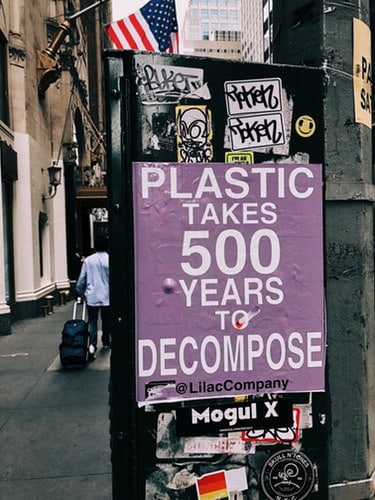
5. FAQ:
Who invented biodegradable plastic?
The history of bioplastics started a long time ago. One of the very first man-made bioplastics, called Parkesine, was created in 1862 by Alexander Parkes (UK) from cellulose.
Another early known bioplastic (made from bacteria) was discovered in 1926 by a French researcher, Maurice Lemoigne.
You can learn more about the history of bioplastics here.
Are biodegradable plastic bags better?
Biodegradable plastics decompose naturally in the environment IF they are disposed of properly.
This is done when microorganisms in the environment break down the structure of biodegradable plastic.
Considering this, biodegradable plastic bags might be a better option, from the traditional plastic bags.
However, that doesn’t mean that they are a good everyday item. We need to use single-use products with caution and ONLY when it is absolutely necessary, and we have no other option.
They may have a few positive features, which separate them from the standard plastic bags. But that doesn’t make them that much better for the environment.
Does biodegradable plastic harm the environment?
They can be harmful to the environment, if not taken proper care of after disposal.
Biodegradable plastics will only degrade by microorganisms if they are thrown away in the required environment for a proper breakdown.
Furthermore, biodegradable plastic can be less harmful, if it is obtained:
- from renewable materials
- with clean energy sources throughout the production processes
- is created without the usage of synthetic materials
How long do bioplastics take to decompose?
International organizations do not specify a particular timeframe.
Different bioplastic products require a different environment and time to decompose. A ‘biodegradable’ material may decompose in industrial composting faster, but may not on land or in the marine environment.
Normally, biodegradable plastics should decompose within a maximum of 6 months.
Another fact is that not all types of degradable plastics are destroyed completely in natural environments, which raises the question of the definition of biodegradable.
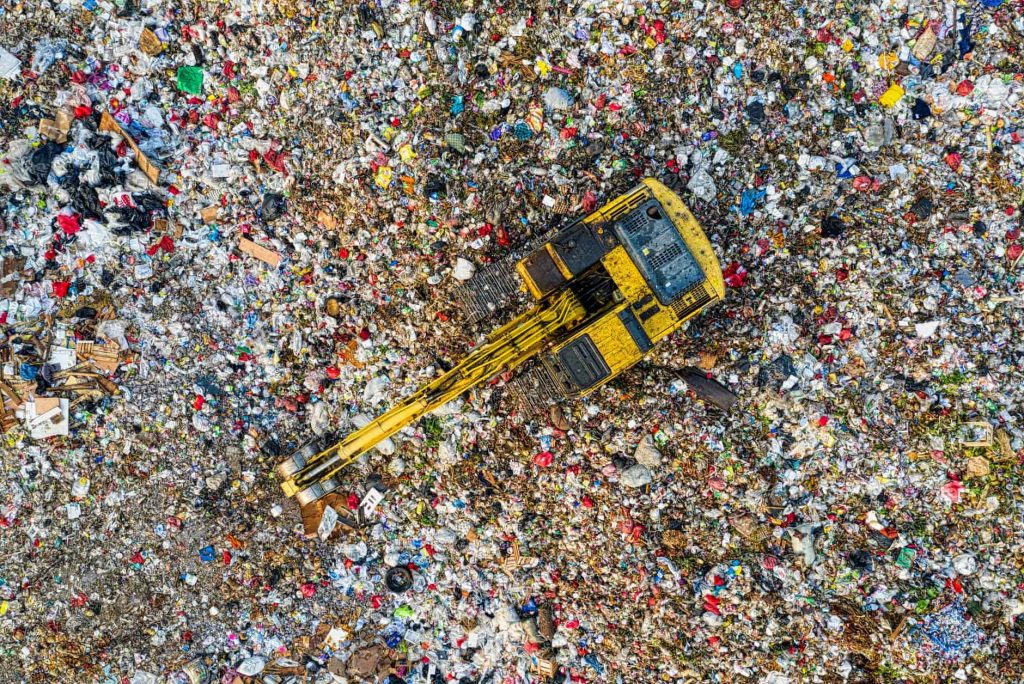
6. Sum up
All in all, the phrase “biodegradable” became an appealing marketing term, which is misleading and it lacks transparency.
This makes it harder for the customers to know how to properly handle it.
The best thing you can do is to avoid any single-use plastics, regardless if they are biodegradable, or bio-sourced.
A huge benefit is that nowadays, there are real, sustainable alternatives to almost anything!
So, choose wisely, and in case you REALLY need a single-use item, then look for:
Home compostable. Why?
Because compostable always means biodegradable.
On the other hand, biodegradable does not necessarily mean that it is biodegradable or compostable.
Share in the comments below what your thoughts are on biodegradable plastics. Are you using them?

nice website! keep it up!
Thank you!